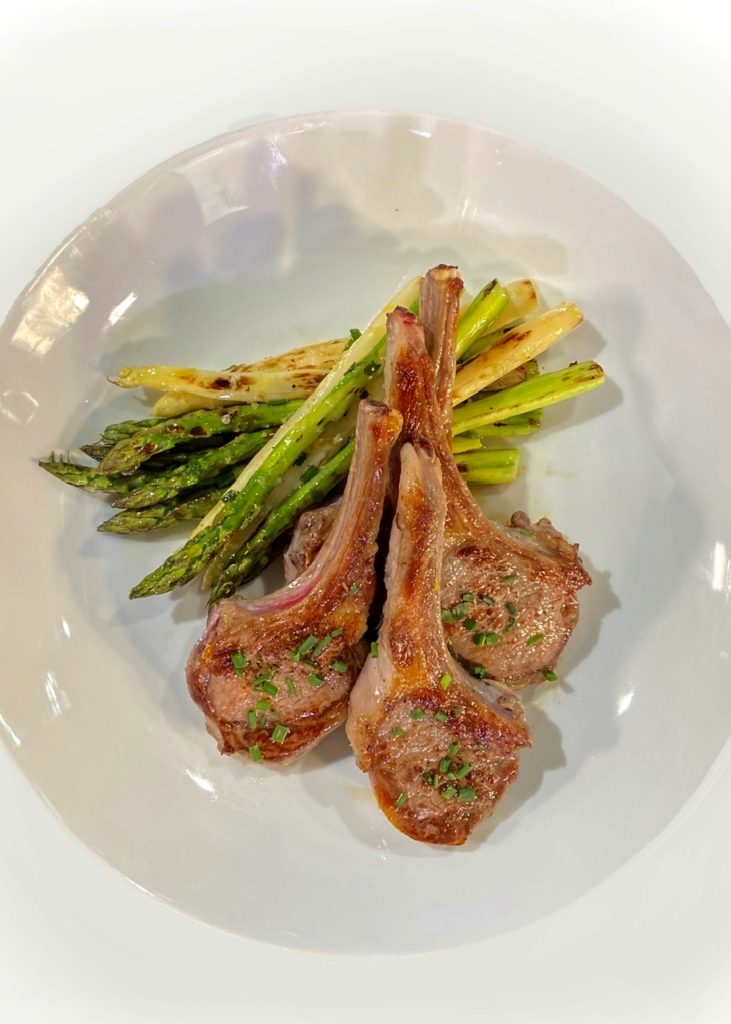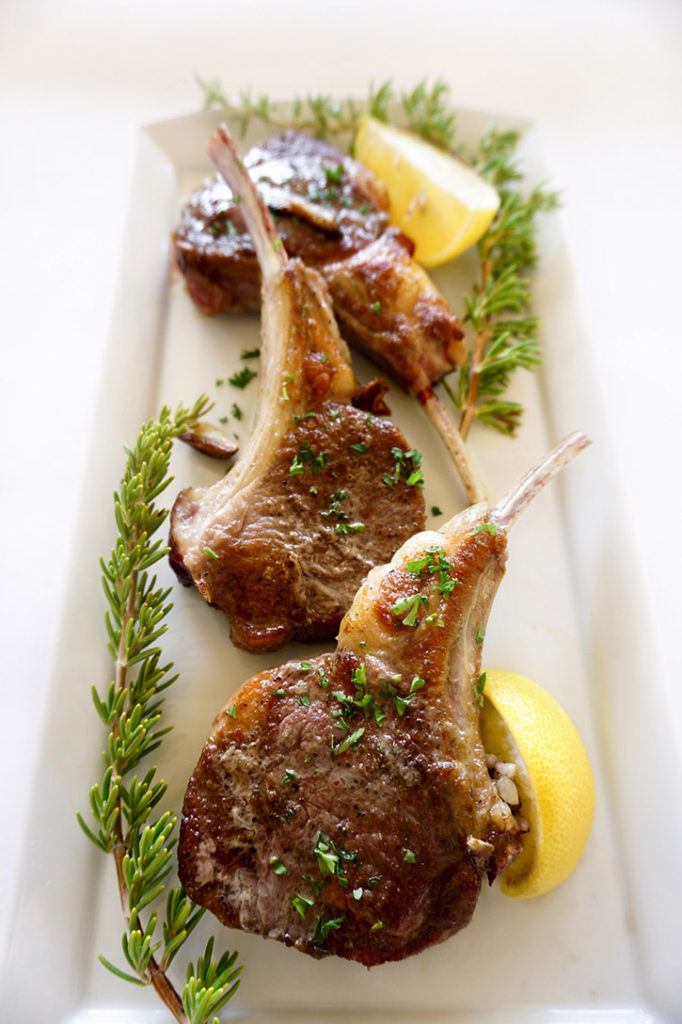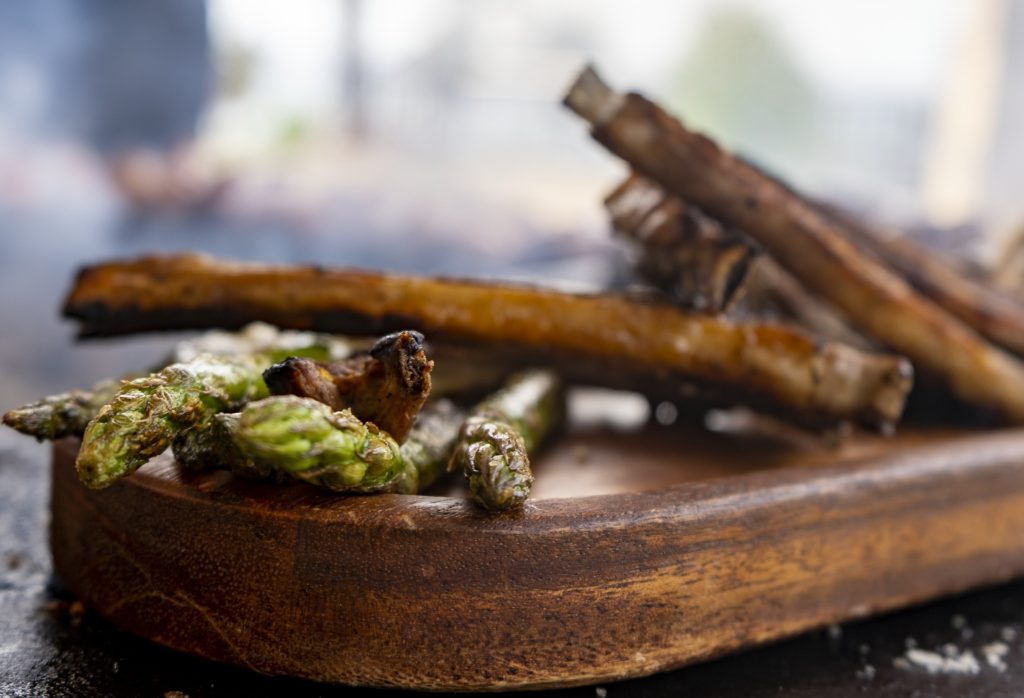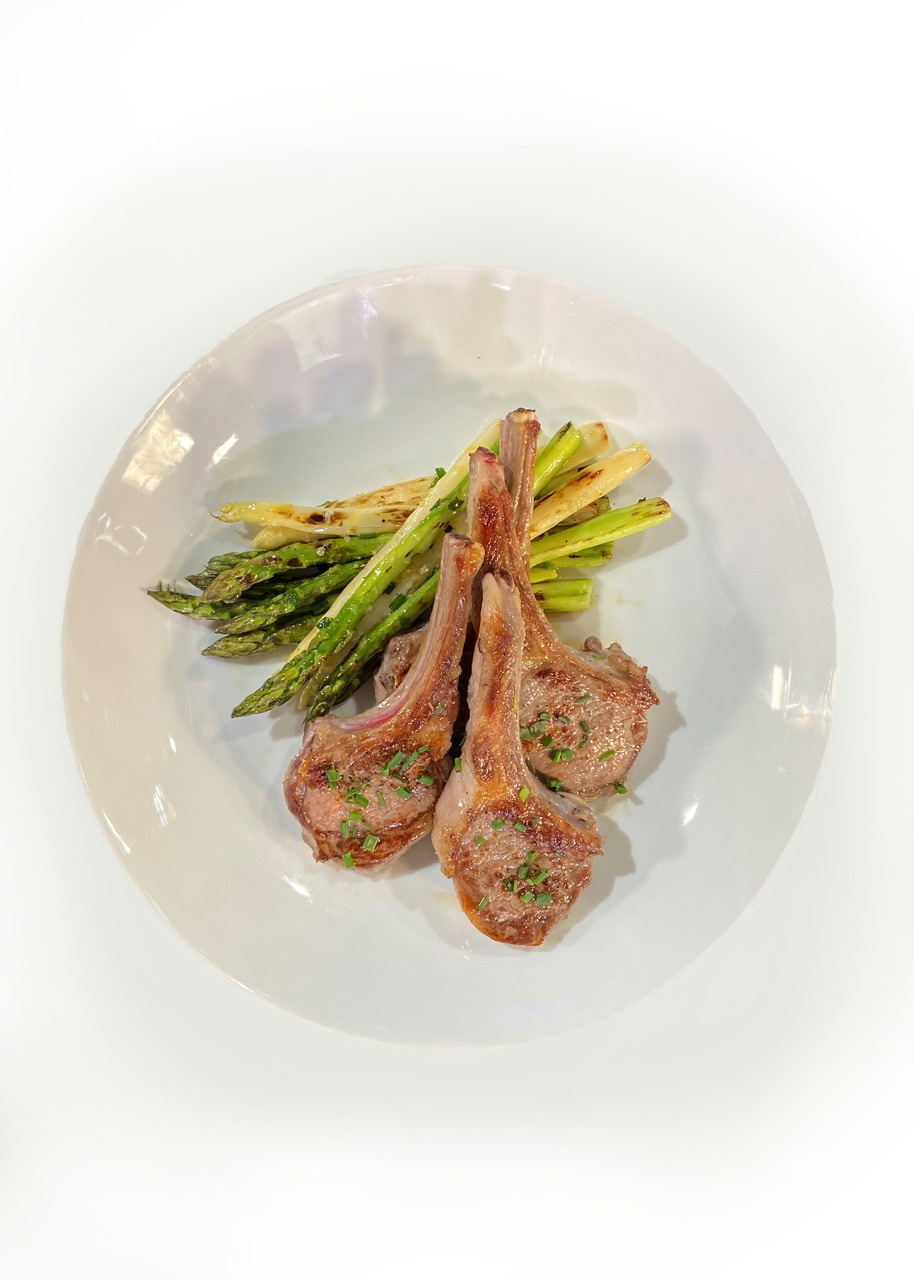
Seared lamb chops are to die for, so what is up with Americans and their aversion to lamb? If the food media is to be believed, it’s set to be one of the hot menu items of 2021, with chefs experimenting with lamb bacon, lamb ribs, all-lamb tasting menus, etc.. Statistics, on the other hand, tell us a different story. Here is the average per capita consumption of a few different types of meat in the United States:
- Chicken = 100lbs.
- Beef = 95lbs.
- Pork = 65lbs.
- Lamb = .8lbs.
Yes, you read that correctly. We eat roughly 100 pounds of chicken each year, but just 0.8 pounds of lamb per year, and the amount is shrinking every year—in the 1970s, it was a bigger, but still painfully little, three-ish pounds yearly. And even those pitiful numbers don’t really reflect the truth. The truth is that the majority of this “per capita” consumption comes from minority communities—Greeks, Muslims, and Indians—who consume a lot of it, raising the overall average.
An “Inferior Product”?
Even worse, lamb is classified as an “inferior product” by economists, which indicates that its demand is inversely proportionate to average consumer income. When consumers have extra money, they prefer to spend it on beef and chicken breasts. According to a 2001 study from Kennesaw State University in Georgia, for every one percent rise in consumer income, there was a 0.54 percent decline in lamb consumption.
It’s an interesting juxtaposition, since while lamb is considered as the “cheap” meat in many communities—the meat to buy when you can’t spring for beef—in high-end cuisine and posh retail circles, it’s often significantly more expensive—and desirable—than beef.
I’m of the latter opinion. I can think of only a few occasions when a steak would be preferable to a fatty, smoky lamb chop. Or when a pot roast is preferable to a luscious, somewhat stinky braised lamb shank. When it comes to Christmas roasts, the Prime Rib reigns supreme, but the roasted leg of lamb is his wilder, funnier cousin.
Lamb marketers have long recognized the difficulty of selling their product to consumers who are hesitant to stray from the familiarity of their beloved chicken and beef, and they have countered by carefully breeding and raising lamb that is designed for the American taste, as well as selling it in forms that are becoming increasingly easier and easier to cook. Indeed, if you haven’t yet attempted to prepare lamb at home for yourself, you have no excuse.

Is Grass-Fed Better Than Grain Finished?
It all depends on your perspective. Some individuals like the gamier flavor of grass-fed lamb, while others prefer the richer flavor and juicier flesh of grain-finished lamb. While it is true that an animal that lives entirely on grain would eventually develop health problems (much like a human who lives solely on hamburgers), grain finishing only occurs during the last month of a lamb’s life. This time frame is insufficient for the animal to develop any health issues that would cause it to suffer in any way.
In reality, given the choice between grass and grain, sheep (and cows, for that matter) always prefer grain. Finishing sheep on grain is as simple as feeding them grain in their fields. They could eat grass if they wanted to, but they do not. It would be like handing us a steak and a bowl of salad if we were them. The majority of us will choose the steak. (If you ate beef.)
Good as an appetizer, or increase serving size for a light supper.
You can slowly and incrementally incorporate more lamb into your diet. Before you dive in and commit to a roasted leg of lamb or a crown rack of lamb, start small. Lamb makes a great appetizer.

Lamb rib chops, in particular, have a lengthy rib bone with a delicious medallion of meat attached to the end. Pan-searing with olive oil, butter, garlic, and rosemary adds earthy notes to the chops without dominating the lamb’s unique meaty flavor. Because the lamb chops are small, they can be rapidly fried in a skillet and ready to serve in minutes. The seared lamb chops are delicious on their own, but a fast pan sauce of honey and apple cider provides a slightly sweet contrast to the savory meat.
Each of the seared lamb chops contains a scrumptious two or three-bite amount of lamb. Another plus? The rib bone serves as a handy built-in handle! Although corn dogs, kebabs, and satays are all tasty bar snacks in their own right, there is comparison. No meat-on-a-stick alternative ismore elegant than a lamb rib chop.
Final note…
Serve the seared lamb chops atop a bed of grilled asparagus for a mouthwatering appetizer. You can even increase the serving sizes and transform this into an elegant meal in itself. Want to learn more about pan-searing? Check out more by clicking here.
Seared lamb chops with asparagus salad

- 8 lamb rib chops
- 1 lb asparagus green or white or a mixture of both
- 1 teaspoon extra virgin olive oil
- 1 teaspoon crushed garlic
- 1 tablespoon snipped chives
- 1 teaspoon lemon zest
- 2 teaspoons lemon juice
- kosher salt and pepper to taste
- 8 tbsp butter
- 3 cloves garlic (crushed, skins intact)
- 3 sprigs rosemary (fresh)
Lamb chops:
Heat nonstick sauté pan over high heat and add 1 teaspoon of extra-virgin olive oil.
Season lamb chops with kosher salt and pepper. Place lamb chops in hot sauté pan with 2 Tbs. of butter, the crushed garlic and sprigs of Rosemary and sear two or three minutes on one side. Turn and cook an additional three minutes, basting constantly. Repeat with remaining chops, adding butter as needed.
Asparagus salad:
Heat grill pan on high or use outdoor grill.
Trim 2 to 3 inches off the bottom of the asparagus spears.
Peel asparagus spears if desired to make them more tender. Drizzle spears of asparagus with a 1 teaspoon of extra-virgin olive oil and place on hot grill pan about four minutes turning occasionally until asparagus is slightly charred.
Toss grilled asparagus with crushed garlic, chives, lemon zest and juice and season with salt and pepper. Place asparagus salad on the bottom of the plate and top with lamb chops with fresh mint or snipped chives.


